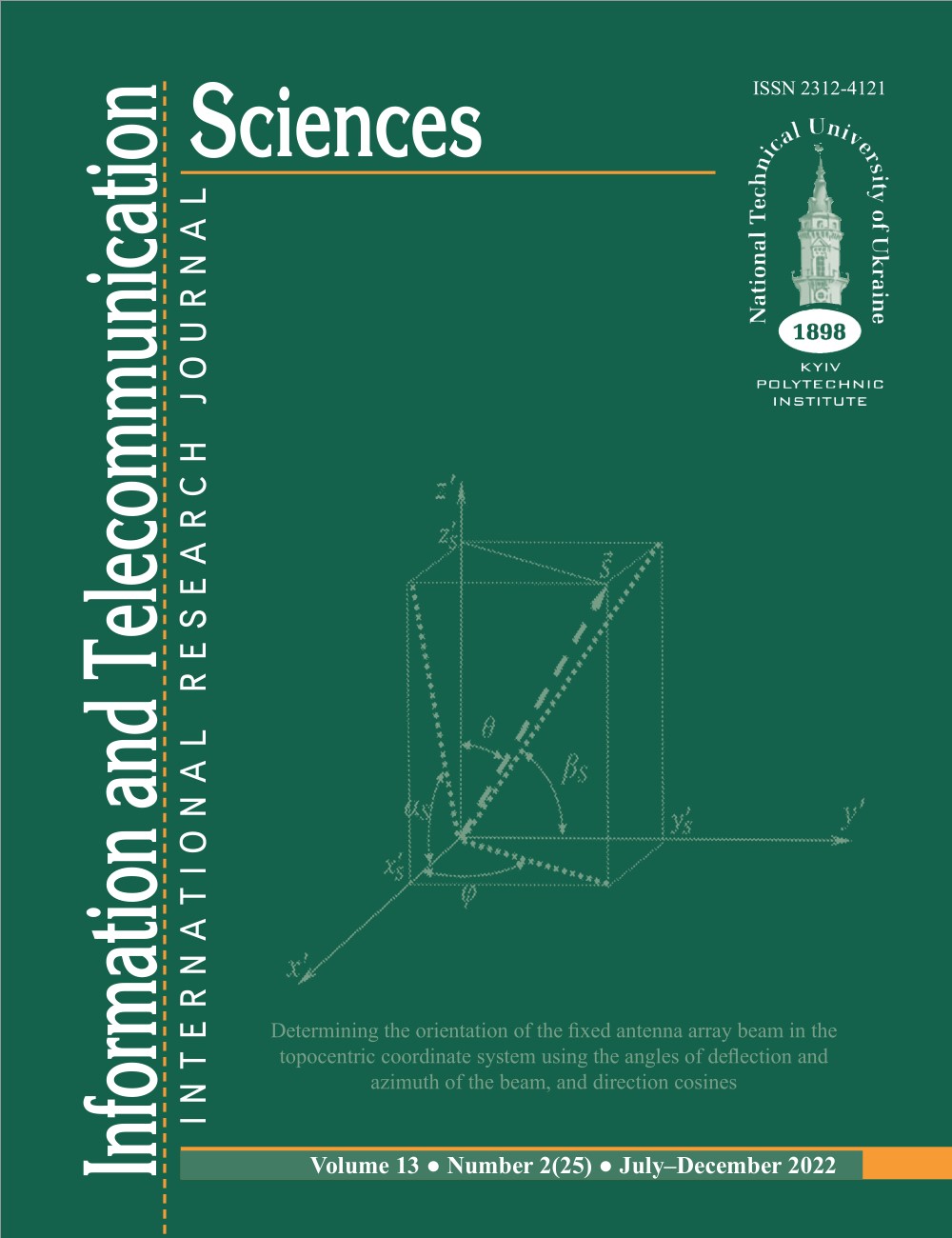EVALUATION OF THE MULTIPATH EFFECT ON THE QUALITY OF RADIO COMMUNICATION IN THE TECHNOLOGICAL RANGE IEEE 802.11xx
DOI:
https://doi.org/10.20535/2411-2976.22022.21-25Keywords:
multipath, IEEE 802.11xx, Cassini Oval, OFDMAbstract
Background. As a result of the rays’ reflection from buildings, from the surface of the Earth or from horizontal boundaries between different layers of the atmosphere, occur multipath effects that cause fast fading, which degrades the quality of service.
Objective. The purpose of the paper is to determine the multipath effect on the signal-to-noise ratio in a wireless communication channel. Compare the results obtained for a communication channel at operating frequencies of the IEEE 802.11xx standard: 5 GHz and 2.4 GHz.
Methods. The useful signal powers and the total interference powers for a communication channel with multipath are calculated. The signal-to-noise ratio for such a channel is compared at operating frequencies of 5 GHz and 2.4 GHz.
Results. The results of the study showed that the higher the frequency of the carrier of the wireless radio link, the less pronounced the effect of multipath is.
The frequency rating significantly affects the quality of communication in multipath conditions. In this case, lowering the frequency significantly improves the reception condition outside of multipath effect. However, it deteriorates significantly due to the effects of rays reflected from the Earth's surface.
In the considered case, the useful signal power in the 2.4 GHz band is 4.2 times higher; at the same time, the power of reflected interference is 19 times higher than in the 5 GHz band.
Conclusions. Suggested model makes it possible to determine the effect of interference power in the ranges traditionally assigned in IEEE 802.11xx technology, specifically 2.4 GHz and 5 GHz.
References
B. O’Hara, A. Petrick, The IEEE 802.11 Handbook: A Designer’s Companion, 2nd ed., IEEE, Mar. 2005.
S. Banerji and R. S. Chowdhury, “On IEEE 802.11: Wireless LAN Technology”, International Journal of Mobile Network Communications & Telematics (IJMNCT), vol.
, Issue. 4, 2013. [DOI:10.5121/ijmnct.2013.3405]
A. Goldsmith, Overview of Wireless Communications, 1st ed. New York, USA: Cambridge University Press, 2005.
D. Tse and P. Viswanath, Fundamentals of wireless communication, 1st ed. New York, USA: Cambridge University Press, 2005.
A. F. Molisch and F. Tufvesson, “Propagation Channel Models for Next-Generation Wireless Communications Systems”, IEICE TRANSACTIONS on Communications, vol. E97-B, no. 10, pp. 2022 - 2034, 2014. [DOI:10.1587/transcom.E97.B.2022]
D. Jiang and L. Delgrossi, “IEEE 802.11p: Towards an international standard for wireless access in vehicular environments”, VTC Spring 2008 - IEEE Vehicular Technology Conference, pp. 2036 - 2040, 2008. [DOI:10.1109/VETECS.2008.458]
H. Chen, A. B. Gershman and S. Shahbazpanahi, “Filter-And-Forward Distributed Beamforming in Relay Networks with Frequency Selective Fading”, IEEE, vol. 58, pp. 1251 - 1262 March 2010. [DOI: 10.1109/TSP.2009.2035986]
M. Luchanin, I. Chepkov, B. Shmigel, “Analysis of spatial and energy limitations on the influence of multipath factors in the VHF radio channel model”, International Conference on Information and Telecommuncation Technologies and Radio Electronics (UkrMiCo), 2019. Retrieved from https://ieeexplore.ieee.org/documeNt/9165402.
J. Sivardiere, “Kepler ellipse or Cassini oval?”, European Journal of Physics, vol. 15, no. 2, pp. 62–64, 1994. [DOI:10.1088/0143-0807/15/2/004]
J. G. Proakis, M.Salehi, “Digital communications,” McGraw-Hill, NY, p.1150, 2008.
L. Uryvsky, A. Moshynska, S. Osypchuk and V. Solianikova, “Features of the OFDM Technology Usage as a Means of Fighting Against Multipath Effects in a Wireless Communication Channel”, 2021 IEEE 5th International Conference on Information and Telecommunication Technologies and Radio Electronics (UkrMiCo). [DOI: 10.1109/UkrMiCo52950.2021.9716694]
L. Uryvsky, A. Moshynska, V. Solianikova, B. Shmigel, “Application of the Classical Noise Immunity Theory for Prediction of the Parameters of Perspective Multiservice Telecommunications in Accordance with Modern Digital Standards”, Current Trends in Communication and Information Technologies: 2020 Springer Nature Switzerland AG, pp 38-59.


